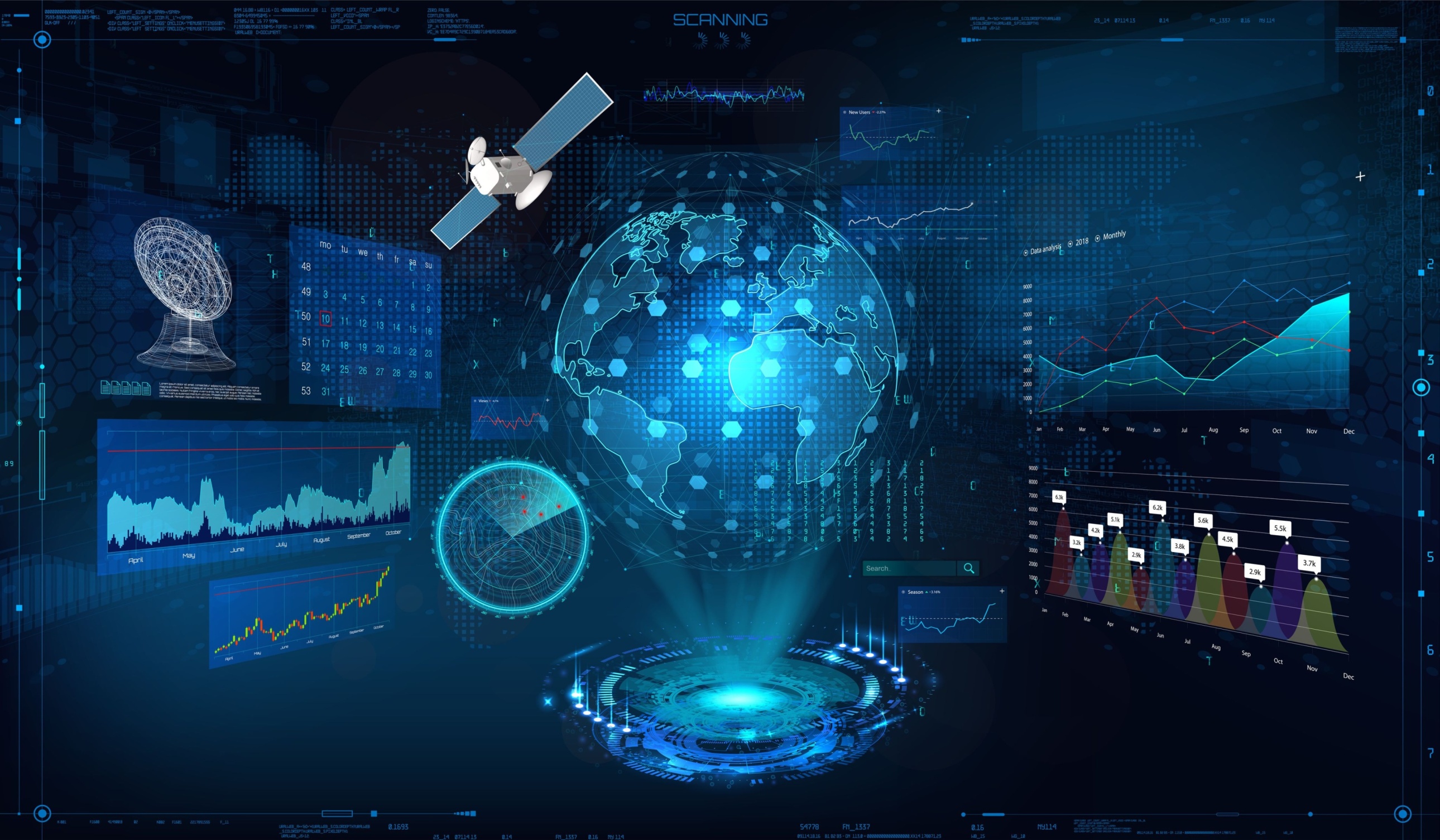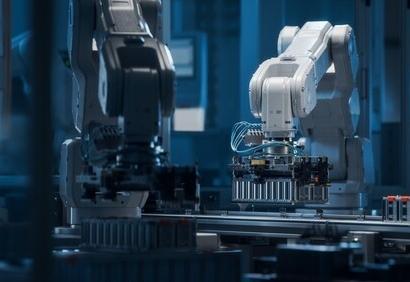Abstract: This paper analyzes the implications of using artificial intelligence and the Metaverse in the military field to investigate how leadership can intervene and operate effectively. In this regard, the role of machine learning or artificial intelligence must be less significant than that of human oversight to avoid ethical dilemmas. To this end, this paper analyses whether good leadership intervenes in both algorithmic creation and retrospection. This competition plays out in the linked and interdependent political, military, economic, social, information, and infrastructure (PMESII) domains. Specifically, in the military field, the competition occurs in six classic domains: Maritime, Land, Air, Space, Cyber, and Electromagnetic, which are increasingly interconnected. The competition is increasingly intense since the military is used as a test for all the available technologies. Artificial intelligence is becoming more widespread owing to the construction of algorithms that constantly expand the potential of machine learning. As for new technologies, the Metaverse assumes an important field. It is increasingly interconnecting our online and offline lives such that the implications of such technology are uncertain. Moreover, new wars have become increasingly hybrid and multidomain-oriented. This is due to several elements, ranging from the communication systems, including social networks, which influence individuals, to the Command & Control systems, being part of Command, Control, Communication, Computer, Cyber & Combat System, Intelligence Surveillance Target Acquisition and Reconnaissance (C6ISTAR), which are also used for the targeting process.
Problem statement: How must the new generation incorporate technological changes to improve leadership capabilities in various contexts?
Bottom-line-up-front: In the current era, the main way for any country to maintain its dominance is to enhance technological superiority and employment. In particular, AI, new disruptive technologies, and the Metaverse could affect the military domain positively and efficiently. These technologies could help military leaders, especially naval leaders, better assess the choices and decisions for overcoming new challenges.
So what?: The various armed forces must educate young officers and embrace the changes brought about by new technologies in the military field. Military academies must develop an appropriate path to increase the technical and classic skills (e.g., managing changes, solving problems, and developing human interaction skills) to create efficient and balanced leadership in the new operational environment.
Integrating Artificial Intelligence, New Disruptive Technologies, and the Metaverse to Enh
.
Download • 907KB

Source: shutterstock.com/SergeyBitos
The Return to the Great Power Competition
The competition between the democratic states, led by the United States and its allies, and the revisionist powers, China, followed by the Russian Federation and the Islamic Republic of Iran, characterizes the new era. Until the last decade, countries worldwide seemed to be proceeding towards a union of intentions. However, the so-called “great power competition” has intensified. For this article, the battleground of this competition concerns all areas of Political, Military, Economic, Social, Infrastructure, Information (PMESII), which includes infrastructure. Additionally, when examining all these areas, we must consider technological development, that is Research & Technology (PMESIIIR & T).[1] Technological development is fundamental to maintaining dominance in the world order; US President Biden reiterated the same concept in the first days of August 2022.[2] The technology sector deserves particular attention; research development, for example, semiconductors, is essential to allow supremacy in related production and use. Semiconductors are used in many fields, from automobile construction to the development of quantum computers. Today, in terms of quantity and quality, the production of semiconductors largely occurs in the Indo-Pacific.[3] The containment policy carried out by Western countries towards China passes from the physical sphere, which goes from the control of the seas to technological research and development to space and the cyber sphere.[4]
The technology sector deserves particular attention; research development, for example, semiconductors, is essential to allow supremacy in related production and use. Semiconductors are used in many fields, from automobile construction to the development of quantum computers.
Future Leadership Skills
Given the impact of sweeping technological changes in international relations, the military, and other domains, what skills should future leaders have? There are different branches of thought: the first prefers classical skills, while the other prefers science, technology, engineering, and mathematics (STEM) education.[5] A good leader must have classical and technical skills in the current era. It may be necessary to divide the different types of leaders according to the level at which they operate. A functional subdivision is political, strategic, and sector (i.e., technical, personnel, logistic, operational).
A minimum level of technical skill is necessary to ensure the right mental elasticity to manage the challenges of this millennium. In addition, the classical skills include managing changes, solving problems and making decisions, demonstrating ethics and integrity, displaying drive and purpose, exhibiting leadership stature, increasing the capacity to learn, self-management, increasing self-awareness, developing adaptability, and communicating effectively.
All domains are connected and interdependent with specific reference to the military field: Maritime, Land, Air, Space, Cyber & Electromagnetic.[6] We must add transversal elements that interact actively with all these elements, like social media. Technology is a transversal factor that impacts everyone; thus, it is necessary to maintain an advantage over the development of artificial intelligence to have supremacy over others.
How can leadership intervene effectively, and, above all, at what stage should it operate concerning the implications of artificial intelligence and Metaverse in the military field? In this regard, the role of machine learning or artificial intelligence must not be more significant than that of human leadership. In this new era, does good leadership only intervene in algorithmic creation, or does it also act in retrospect?
Impact of AI on Leadership
Technology has always represented an enabling and essential factor in acquiring supremacy over others. The current era is characterized by a hyper-connection that will continue to increase and increasingly bind the different sectors of society and people themselves. This involves an increase in data availability. Nevertheless, such data must be collected, recorded, and analyzed as quickly as possible to guarantee effective analysis and protection.[7]
AI is set up to support these analyses by learning from the external environment to take or help take decisions independently. This last aspect is of great importance because deciding the types of decisions that can be taken independently is necessary. AI certainly leads to numerous advantages[8] based on the type of sector it is implemented in: medical, economic/commercial, social, energy, military, environment, simulation and improvement, and research and development.[9]
AI certainly leads to numerous advantages based on the type of sector it is implemented in: medical, economic/commercial, social, energy, military, environment, simulation and improvement, and research and development.
The military applies AI in various domains, but the maritime domain includes and cooperates with all the others. There are various examples of AI applications in the maritime environment, which can be summarised in four main areas: Combat Networks, Logistics, Anti-Submarine Warfare, and Mines and Countermines measures. The new combat networks are leading to a “Computer Vision” philosophy, which is made by machine-human collaboration for integrating processors, software, and displays with software applications and algorithms to support command processes and decision-making.[10]
The logistics field is now supported by visual reality: virtual reality, computer vision, and digital twins offload burdensome maintenance tasks that distract soldiers from decision-making. Anti Surface Warfare (ASW) domain is now capable of multi-static operations: exploiting target returns from multiple autonomous sources or receivers (UXVs) to produce target tracks. This is supported by the recent events in the Baltic sea, where Nord Streams 1 and 2 were attacked. These attacks were probably conducted by Unmanned Underwater Vehicles (UUV). In the future, AI could increase the effectiveness of UUV deployment, mostly against infrastructure and info-structures. With these technologies in multi-domain operations & hybrid warfare, the military and political leadership could act effectively and covertly to reach the military and strategic objectives. Lastly, the Mine-Counter Measure activities are supported by synthetic aperture sonars: high-rate scan sweeps by autonomous vehicles provide high-resolution images and reduce risk as host ships stay outside minefield boundaries.
In general, the main focus is now on Command, Control, and Combat systems: the application of AI to new systems requires new kinds of cyber protection for the networks[11] to prevent the enemy from penetrating the system and using it to disrupt ongoing operations and assets. President Obama’s staff studied this dilemma.[12] Furthermore, the Command and Control systems have to deal with multi-domain operations; to guarantee safety and secrecy, there are new studies on the Cyber Protection of increasingly autonomous systems and multitasking.[13] These systems have to deal with the coordination between the ship systems and those used on the new concept of “remote embarked vehicles”. Unmanned Armed Systems and Vehicles used by the new ships can act in the air (UAS), on the surface of the sea (USS), and underwater (UUV). All of them are controlled by men and supported by the application of AI.
The application of AI to new systems requires new kinds of cyber protection for the networks to prevent the enemy from penetrating the system and using it to disrupt ongoing operations and assets.
The Combat System is now almost autonomous. Using the logical AI decision and discrimination processes, it can define a target, acquire it, and propose the best shooting solutions to the operators. For example, the new systems can analyze various missile tracks to intercept and provide fire solutions to counterattack. This specific application leads to the “Paradox of Choice” resolution. One of the main problems in the decision-making process is having too many options without a clear view. The application of AI to various systems, especially the targeting ones, offers a fast calculation of the success rate. This helps in giving an output of just a couple of possible choices, leaving the final decision to the officers and filtering out suboptimal options to save time.[14]
The new micro-satellites could use AI to move from one place to another, following the troops on the battlefield or ships in some areas, such as the Arctic Ocean, where continuous satellite coverage is lowest. Moreover, the AI inside the micro satellites could enhance the defense system against attacks from other satellites or the ground and be integrated into the warfare net with warship/aircraft/C&C centers improving accuracy in detecting and tracking targets.
In particular, we live in an era in which climate change is an exponentially disabling factor that will impact the development of countries. Preserving the environment is one of the tasks that all Western governments and emerging powers are taking upon themselves, signifying how essential it is for survival. Accordingly, technology, especially AI, could be used to forecast and optimize population alert systems. Relevant technologies could be exploited for the studies aimed at restoring polluted territories with dedicated programs and implementing corrective actions to counter the overheating of some regions globally.[15] All this could be possible with monitoring and mapping networks. In this context, leadership would play an essential role as individuals have to decide which of the proposed solutions is suitable for a given place inhabited by certain societies.
Another sensitive aspect of AI implementation is in the simulation and improvement to perfectly integrate multiple sectors, such as medical, economic/commercial, social, energy, military, environment, simulation & improvement, research and development. The simulation would allow one to imagine what could happen with some certainty and, consequently, help one to work towards improvement. Everyone, from individual sector technicians to those tasked with deciding which data to enter to obtain certain simulations, would operate with a high degree of autonomy.
Another sensitive aspect of AI implementation is in the simulation and improvement to perfectly integrate multiple sectors, such as medical, economic/commercial, social, energy, military, environment, simulation & improvement, research and development.
This is directly linked to research and development, a sector that overlaps all other domains, wherein AI could help achieve a clear superiority over various competitors. Being transversal, the implementation of AI is all-encompassing. In this context, those who give directives, those who follow the indications, and those who work on projects maintain positive, recognized, and effective leadership towards all the components of the various working teams.
Another aspect is using AI to find fake news published on social networks.[16] In this era, wherein war occurs in both the physical and virtual realms, commanders could use AI to identify fake news and establish a strategy to counter it. In this way, the leadership could increase the number of followers and mobilize resources. Further, the leader could influence public opinion and change the nature of the mission.
In light of what has been said so far, there are at least two critical aspects to consider when deploying such technologies: the type of code that must be used, which should be ethical, and a solid legal framework that must also be used to set rules that are generally recognized by all and designed to clearly define legality in reference to ethical human conduct.
Ethical Dilemma
In any decision-making situation, ethical issues are either implicitly or explicitly involved. The choices leaders make and how they respond in a given circumstance are informed and directed by ethics. Military leaders must constantly deal with ethics because of their roles and position.[17]
New technologies and AI require this process to be applied in the decision-making processes made by these new instruments. To do so, two main phases are required: firstly, the algorithms used for programming have to be created based on the ethic of the creator so that the direction taken in the process is ethical. In other words, they must be following human rights and humanitarian principles. Secondly, human beings need access to a control phase to evaluate outputs and avoid severe errors in interpreting data. The facts give a clear example of the importance of the surveillance phase that occurred in Russia in 1983 when Stanisláv Evgráfovič Petróv was assigned to an organization superintending the new early warning system that had to reveal ballistic missiles launched from NATO’s members. On September 26, 1983, Petróv identified a false alarm given by the system and decided not to activate the response system, probably avoiding a nuclear conflict.[18]
New technologies and AI require this process to be applied in the decision-making processes made by these new instruments.
Another ethical dilemma point of view is related to data management security. One has to be aware of the importance of avoiding sharing, spreading, or selling secret information to others, nations, or organizations.
Impacts of New Technology Onboard Modern Warships and Naval Leadership
The naval leadership learning process is a key topic in new officers’ education that begins in naval academies and develops throughout officers’ careers. It is crucial that all young officers clearly comprehend that leadership is strictly linked with the profession, as it is a constant responsibility that requires efficiency. Becoming a great leader today is increasingly complex because the individual must choose between all the available information and “see through the fog” of daily tasks to focus on the goals that must be achieved constantly.[19]
The role of the commander is unique to other civilian leadership positions. For example, at sea, the commander is alone with his crew, where the safety of the naval unit and success in the battle and the assigned mission depends on her/him. The crew looks at each commander with critical eyes but must trust the commander because key decisions that will lead to victory or defeat depend wholly on the commander.[20]
The Naval Unit, technologically advanced and capable of projecting power and defending the interests of an entire country, is at the commander’s disposal at sea. Naval Units are versatile vehicles able to change missions quickly and switch from peacetime operations to combat mode almost instantaneously; therefore, the conduct of the tactical maneuvers is up to experienced people with a high level of naval leadership. AI could support a commander’s decision-making process at sea without affecting the commander’s authority and authoritativeness, as the final decision will depend on the commander.[21] The current Command and Control systems are technologically advanced and have a good degree of automation, but the intention is to implement them with AI.[22] The recent technological era is data-heavy. The difficulty is not related to collecting this data but rather to analyzing and exploiting it quickly.
AI could support a commander’s decision-making process at sea without affecting the commander’s authority and authoritativeness, as the final decision will depend on the commander.
The current systems can assign a classification (SURF-SUB-AIR) and identity (FRIEND or FOE) to a contact but function in strictly mathematical terms. Thus, human intervention is always necessary. However, AI could facilitate the decision-making process[23] even further, particularly in the context of air warfare, where discovery, tracking, target classification, identification, and engagement occur very quickly, especially with regard to missiles.
The officer who must manage certain situations, and the commander, would not lose credibility and would unambiguously exercise leadership in tandem with AI support. AI could enhance the cyber protection of both the Command and Control Systems and the communication networks that exploit the satellite carrier, considering that there is a high level of integration between naval and air assets and with land commands.
Cyber protection would materialize not only on the outside but also in all internal networks, ranging from the Command and Control System to the platform and security system. Technological digitization has brought many advantages, but numerous vulnerabilities and criticalities are inherent. Therefore, cyber protection represents a pillar to being able to not only fight but also navigate safely. The implementation of technology and, therefore, the detail of AI would facilitate the centralization of decisions to be taken on the single consoles in the dashboard and Combat Information Center (CIC) and the tactical and strategic management of events.
The commander could maintain a certain degree of positive leadership towards the crew, guaranteeing each crew member some degree of empowerment and freedom, thus leaving them the appropriate autonomy to act. This freedom is crucial to give a sense of responsibility to those who usually don’t have to make a big decision. This technique prevents operators from blindly trusting their machines and systems. In other words, the working process could not only count on AI, but human control remains the process’s focal point.
AI could support and advise the members of the CIC team in the correct setting of the radar and sonar systems based on environmental characteristics. In contrast, the weapon systems’ predisposition would remain the commander’s prerogative. In a not-too-distant future, with the almost instantaneous analysis, enhancement, and management of data, the reaction of the naval unit and counter-reaction of the enemy could be quickly simulated to make the most effective decision at that juncture. In these hypothetical simulations and situations, the crew members make the difference because they direct the system to operate in a certain way. Therefore, the whole crew must work with a suitable delegation regime.
AI could support and advise the members of the CIC team in the correct setting of the radar and sonar systems based on environmental characteristics. In contrast, the weapon systems’ predisposition would remain the commander’s prerogative.
The balance needed is fundamental: clarity of purpose, exemplary leadership, loyalty, charisma, organization, and management are pillars of being a good commander that is beyond AI and technology. If the crew fails, the commander is left alone to fight with a vehicle that is essentially unmanned or ‘soulless’, and the chances of failure increase. Charisma is not the sole requirement for leading a crew: crews govern themselves in other ways, developing skills, including transversal ones, and managing people-to-people relationships wisely, making long-term experience fundamental.
The Role of Metaverse in the Military Field and Naval Leadership
The Metaverse is immediately connected to civilian entities: social,[24] medical, and infrastructural, among others. However, the Metaverse can also apply to the military, wherein there is great potential and capacity for implementation. There is a particularly large margin for growth: training, maintenance (for naval units both in port and at sea), and operations on the battlefield.[25]
In the Metaverse, the commanders, crews of ships, regiments, and pilots of fighter planes and helicopters can be trained. The military Metaverse must be imagined as a platform where there are a series of interconnected systems, wherein several training assets[26] (e.g., simulation of entire CIC-Bridges-Platform Operational Centers, Weapon Systems in use, guns and missiles systems, aircraft cockpits and helicopters) are concurrently operating in a virtual reality world. Each operator could wear glasses capable of displaying all the devices that must be set up for use via virtual reality. In this way, the operators are trained to carry out their duties in full fidelity to their systems, and the commanders are trained in leadership.[27]
Accordingly, a commander can demonstrate to his men how he would behave on the battlefield and admit to errors made to grow together and avoid repeating similar mistakes. Therefore, by projecting these ideas on a large group of ships, for example, for the assets of the NATO Allies and the European Union, complex training would be guaranteed even if the assets were not dislocated. It is clear that training with various assets, such as large ships, could be carried out in the Metaverse at a lower cost than in the real world. Team building between “remote crews” would be enhanced, and in this way, people-to-people interactions would be enhanced in ways that could not occur under normal conditions.
It is clear that training with various assets, such as large ships, could be carried out in the Metaverse at a lower cost than in the real world.
Furthermore, another significant factor is related to the experimentation of tactics. In this context, leadership grows with the experiments’ success. The commanders and officers demonstrate their potential on the field and set themselves up as leaders capable of achieving victory and success in the mission. In this way, the crew develops stronger relations with these figures and is ready to follow them on the battlefield. Leadership skills and experience assume almost the same importance as charisma, which was fundamental in historical battles. The crews must believe that their commanders and officers have the necessary skills to face the new challenges.[28]
This approach can be easily replicated for what concerns the technical part. In the navy, preventative and corrective maintenance is particularly critical because the slightest system fault could affect the employment of a critical weapons system. Some maintenance requires intervention by the manufacturing industry relevant to the system/apparatus. This Metaverse activity can be conducted without limiting contemporary activities, whether in port or at sea. The operators could follow the instructions the maintenance technicians gave and instantly make corrections, even through a digital twin. Naval units would need less invasive interventions in port and could continue operating at sea without suspending a mission. The leadership of the commander at sea would not lose effectiveness.
Even with ships in operation, the Metaverse would make sense. For example, the commander and the key personnel on guard engaged in tactical action can interact with the superordinate commands, other naval units, and other commanders at sea through the Metaverse and the normal channels. Training in the Metaverse would enhance the ability to perform similar actions in the real world. Leaders need to be stronger and more authoritative, especially when they come up with a solution that may differ from the one suggested by the onboard systems. This disagreement may destabilise the crew, losing trust towards the commander. Many errors have been made relying on the onboard simplified systems, resulting in a non-charismatic leadership: a clear example is the collision at sea caused by a non-proper watch-out duty and based only on radars and anti-collision systems. Guiding personnel in fast-changing and interconnected conditions is much more difficult. Still, at the same time, technology allows for rapid improvement, from technical to transversal, and finally, helps orient crew members to achieve the final goal.
Leaders need to be stronger and more authoritative, especially when they come up with a solution that may differ from the one suggested by the onboard systems. This disagreement may destabilise the crew, losing trust towards the commander.
Therefore, the Metaverse has many applications and implications in the military domain. To guarantee the desired results concerning the leadership of the commanders and officers, it cannot be ignored. As stated previously, with the help of the Metaverse, leadership characteristics would be improved and amplified; depending on the areas in which you operate, skills can grow very quickly, as officers will have a better experience through training in virtual scenarios are very similar to real ones.[29]
In a hyper-connected world, where wars are multi-domain and inter-agency, the use of the Metaverse becomes essential to keep the technological gap high with other powers that want to assert themselves and acquire more power and prestige than in the Western world.
Conclusion
The international race for global supremacy is subject to the maintenance of technological advancement vis-à-vis competitors. To achieve supremacy, it is necessary to have an availability of rare earth materials, development of semiconductors, microchips, as well as infrastructure related to submarine cables and satellites for data exchange (especially in parts of the world where submarine cables are not currently developed such as the Arctic and Antarctica). This is reflected in the competition between the Western world and the revisionist powers of China, the Russian Federation, and the Islamic Republic of Iran. Ruthless competition is reflected in all the domains of the PMESIIIR & T, which comprises the classic domains of the military world: Sea, Earth, Air, Cyber, Space, and the Electromagnetic Spectrum. Therefore, a leader must possess skills that are of a classical/managerial nature, along with a solid basis in technical nature. Without the latter, it is difficult to understand specific projects’ difficulties and development potential. To give directives, it is essential to know what to ask for.
The skills remain unchanged in the military. Specifically, a good commander in naval leadership must possess suitable technical skills to direct subordinates in the mission. This does not mean micro-managing; rather, the commander must show everyone what is required of them clearly and unambiguously. Furthermore, a good commander leads the crew by example and ethical behavior while immersed in advanced technology. The ethical dimension allows focusing on avoiding the “dark side” of leadership,[30] toxic and disruptive leadership. This situation is generally real when the leader takes personal advantage of her/his skills. Specifically, it is essential to consider ethical concerns to avoid compromising values, such as humanity and decision-making freedom. To this end, the base of the programming code for the AI application must be based on foundational/basic values and core principles.
The ethical dimension allows focusing on avoiding the “dark side” of leadership, toxic and disruptive leadership. This situation is generally real when the leader takes personal advantage of her/his skills.
In the technological field, the implementation of real ethical leadership that is informed by the writing of the codes and the effective use of means and systems is of particular importance. In aid of this ethical framework, there must be a legal framework that dictates the limits and boundaries within which it is necessary to function. Nonetheless, even in this context of such highly developed technology characterized by AI and Metaverse, it is appropriate for humans to remain at the center of the decision-making. This is because AI does not have the capabilities for forecasting analyses when the parameters to be considered are not clear data. In contrast, human beings can think ahead while accounting for those uncertainties, completing the decision-making process more accurately.
Often, the commander at sea and his staff are faced with choices that are not immediate and easy to choose. In this context, the AI could intervene, supporting and directing the leader towards the best choices, overcoming the so-called “paradox of choice“, and, thus, reducing the “choice overload“. Choice overload is a characteristic of the new era, which arises precisely from the multitude of data available, making quick analysis difficult. For the commander at sea, who is constantly developing naval leadership skills, the AI applied to the Command, Control, Communications, Computers, Cyber-Defense and Combative Systems, and Intelligence Surveillance Target Acquisition and Reconnaissance (C6ISTAR) brings concrete benefits and has a positive psychological impact, improving personal happiness, self-determination, creativity, resilience, emotional intelligence, and mindfulness.
Furthermore, AI could be used to identify fake news circulating on social networks, especially in an era of hybrid wars that affect all domains. This way, the leader could influence and mobilize resources and people towards common goals, discrediting competitors. The leadership of politicians and military leaders would benefit from this and be strengthened while creating an imbalance on the opponents’ side.
The Metaverse represents a platform capable of increasing the skills and abilities of leaders and employees. This platform, in the military field, would represent a terrain in which personnel can learn, train, and carry out maintenance of the equipment used with the help of the technical personnel from the relevant industry, as well as carry out military operations in close coordination with all the other commands and military assets. Employing the Metaverse does not mean alienating oneself from reality, but rather the opposite. It means increasing the capacity to use military vehicles and operating with remote support, even overseas.
The Metaverse represents a platform capable of increasing the skills and abilities of leaders and employees.
All these aspects are feasible, but the increase in data dissemination should be improved to ensure adequate performance. While on land, especially in the civilian field, this problem is not widespread. However, at sea or in remote areas (such as the Arctic and Antarctic), the problem still exists.
To sum up, the various armed forces must change how to educate young officers and embrace the changes imposed by the new technologies in the military field. Military academies must develop an appropriate path to increase the technical and classic skills (such as managing changes, solving problems, and developing human interaction skills) to be prepared to develop efficient and balanced leadership in the new operational environment. Technical skills’ improvement is necessary because a leader cannot act without appropriate technical skills and knowledge to lead the crew and personnel in this new era.
Lieutenant Commander (IT-N) Antonio Bufis is a researcher in Artificial Intelligence and Machine Learning and an analyst in Naval and Maritime Sciences and Geopolitics. Bufis has had his articles published in Italian technical journals. The views contained in this article are the author’s alone and do not represent the views of the Italian Navy.
[1] For the info-structures, i.e., submarine cables, are fundamental to increase protection with surveillance and other means.
[2] Fact sheet: CHIPS and Science Act will lower costs, create jobs, strengthen supply chains and counter China (August 09, 2022).
[3] Taiwan runs 90% of the semiconductor market.
[4] https://www.truenumbers.it/semiconduttori-ue/; https://worldpopulationreview.com/country-rankings/semiconductor-manufacturing-by-country.
[5] The White House, US National Security Strategy, October 2022; Anusuya Datta, “What is Military Metaverse and How is it Different from Commercial Metaverse,” July 29, 2022, https://www.geospatialworld.net/prime/what-is-military-metaverse-and-how-is-it-different-from-commercial-metaverse/.
[6] The Japanese military doctrine considers the EM field as a domain.
[7] https://conversational-leadership.net/world-is-hyperconnected/.
[8] White House, Statements And Releases, 2022, Fact Sheet: Chips and Science Act Will Lower Costs, Create Jobs, Strengthen Supply Chains, and Counter China, August 09, 2022, https://www.whitehouse.gov/briefing-room/statements-releases/2022/08/09/fact-sheet-chips-and-science-act-will-lower-costs-create-jobs-strengthen-supply-chains-and-counter-china/; Gastón Sanglier Contreras, Aurora Hernández González, Ma Inés Serrano Fernández, Carmen B. Martínez Cepa & Juan Carlos Zuíl Escobar, “The Importance of the Application of the Metaverse in Education,” July 15, 2022, https://www.researchgate.net/publication/362040311_The_Importance_of_the_Application_of_the_Metaverse_in_Education.
[9] Prince Chacko Johnson, Christofer Laurell, Mart Ots, Christian Sandstrom, “Digital innovation and the effects of artificial intelligence on firms’ research and development – Automation or augmentation, exploration or exploitation?,” March 20, 2021, https://www.sciencedirect.com/science/article/abs/pii/S0959652621000548#preview-section-snippets.
[10] Archana Yadav, “Role of Artificial Intelligence in leadership,” February 2020, https://www.researchgate.net/publication/350663835_Role_of_Artificial_Intelligence_in_leadership.
[11] Prince Chacko Johnson, Christofer Laurell, Mart Ots, Christian Sandstrom, “Digital innovation and the effects of artificial intelligence on firms’ research and development – Automation or augmentation, exploration or exploitation?,” March 20, 2021, https://www.sciencedirect.com/science/article/abs/pii/S0959652621000548#preview-section-snippets.
[12] The White House, https://obamawhitehouse.archives.gov/files/documents/cyber/ISA%20-%20A%20National%20Model%20for%20Cyber%20Protection%20Through%20Disrupting%20Attacker%20Command%20and%20Control%20Channels.pdf.
[13] Lt Gen Anil Kapoor, AVSM, VSM (Retd), “Joint C6ISR and exploitation of space domain – a roadmap to address the capability gaps,” August 2021, https://www.trentonsystems.com/blog/c2-c4isr-c5isr-c6isr-differences.
[14] Archana Yadav, “Role of Artificial Intelligence in leadership,” February 2020, https://www.researchgate.net/publication/350663835_Role_of_Artificial_Intelligence_in_leadership.
[15] The White House, US National Security Strategy, October 2022, Prince Chacko Johnson, Christofer Laurell, Mart Ots, Christian Sandstrom, “Digital innovation and the effects of artificial intelligence on firms’ research and development – Automation or augmentation, exploration or exploitation?,” March 20, 2021, https://www.sciencedirect.com/science/article/abs/pii/S0959652621000548#preview-section-snippets.
[16] Idem.
[17] Peter G. Northouse, Leadership Theory & Practice, 8th Edition, 335-345.
[18] https://montrealethics.ai/ai-ethics-during-warfare-an-evolving-paradox/.
[19] CDR Lesa A. Mc Comas and CDR J.D. Kristenson, “The Naval Officer’s Guide,” 13th Edition, 152-153.
[20] Ibid., 227.
[21] Archana Yadav, “Role of Artificial Intelligence in leadership,” February 2020, https://www.researchgate.net/publication/350663835_Role_of_Artificial_Intelligence_in_leadership.
[22] Priya Narayanan, Manuel Vindiola, Song Park, Anne Logie, Nick Waytowich, Mark Mittrick, John Richardson,
Derrik Asher, and Alexander Kott, “First-Year Report of ARL Director’s Strategic Initiative (FY20‒23): Artificial Intelligence (AI) for Command and Control (C2) of Multi- Domain Operations (MDO),” May 2021, https://apps.dtic.mil/sti/pdfs/AD1132186.pdf.
[23] Idem.
[24] Gastón Sanglier Contreras, Aurora Hernández González, Ma Inés Serrano Fernández, Carmen B. Martínez Cepa & Juan Carlos Zuíl Escobar, “The Importance of the Application of the Metaverse in Education,” July 15, 2022, https://www.researchgate.net/publication/362040311_The_Importance_of_the_Application_of_the_Metaverse_in_Education; Lt. Col. Ryan Kenny, “The Military Metaverse and the Future of Large-Scale Combat Operations,” August 01, 2022, https://www.afcea.org/signal-media/cyber-edge/military-metaverse-and-future-large-scale-combat-operations.
[25] Pete Morrison, “Data in the military Metaverse: enterprise terrain management for training,” July 26, 2022, https://militaryembedded.com/comms/communications/data-in-the-military-metaverse-enterprise-terrain-management-for-training.
[26] Jennifer Mcardle And Caitlin Dohrman, “The full potential of a Military Metaverse,” War on the Rocks, February 18, 2022, https://warontherocks.com/2022/02/the-full-potential-of-a-military-metaverse/.
[27] Anusuya Datta, “What is Military Metaverse and How is it Different from Commercial Metaverse,” July 29, 2022, https://www.geospatialworld.net/prime/what-is-military-metaverse-and-how-is-it-different-from-commercial-metaverse/.
[28] Benjamin F. Armstrong and John Freymann, “Developing the Naval Mind, USNI, 2021,” 204-210.
[29] Andrew Eversden, “Into the military Metaverse: an empty buzzword or a virtual resource for the Pentagon?,” Breaking Defence, April 12, 2022, https://breakingdefense.com/2022/04/into-the-military-metaverse-an-empty-buzzword-or-a-virtual-resource-for-the-pentagon/.
[30] Peter G. Northouse, Leadership Theory & Practice, 8th Edition, 344-345.






